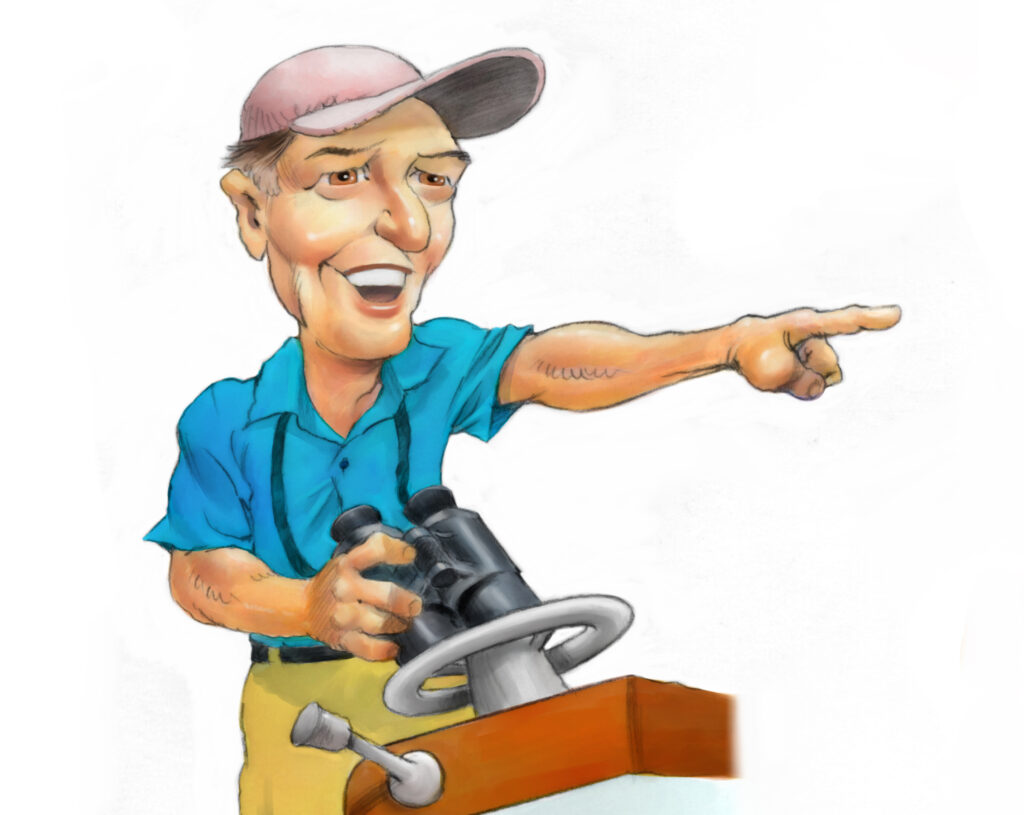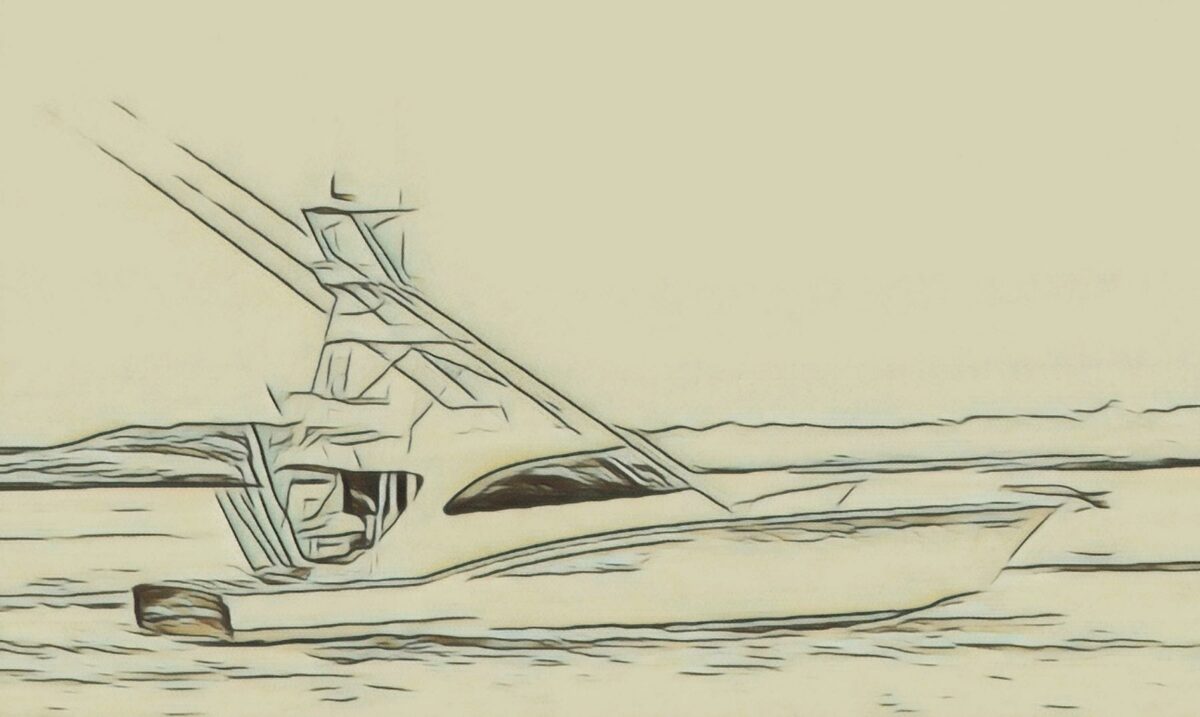Pursuing Maximum Velocity: The Quest for Speed in Modern Sportfishing Vessels
Table of Contents
The need for speed is at the top of the wish list for many owners(including builders on the cutting edge of Sportfishing Yacht Design and Technology) when building the bucket-list sportfisher of their dreams. For instance, when Leroy Wurst went to Tim Winter, owner and president of Winter Boatworks, to construct his new 66- foot Iron Man, Wurst wanted to go 50 knots or faster. as he hunted fish near his home in the Great Lakes. Ditto, Gregg Mufson, the San Francisco-based owner of the Zancudo Lodge in Costa Rica, asked Contender Boats to build him a 44-foot center console that would cruise at up to 48 knots so Mufson could zip north from Costa Rica to Puerto Vallarta in Mexico, or south to Panama to fish.
But speed isn’t the only thing owners want today. “Owners want the fastest, plus the best riding, best fishing boats we can produce, they always have,” says John Floyd, president of F&S Boatworks, in Bear, Delaware. More specifically, the full range of what owners want is split into two different size groups related to the purpose of the boat, adds John Bayliss, founder and owner of Bayliss Boatworks, in Wanchese, North Carolina.
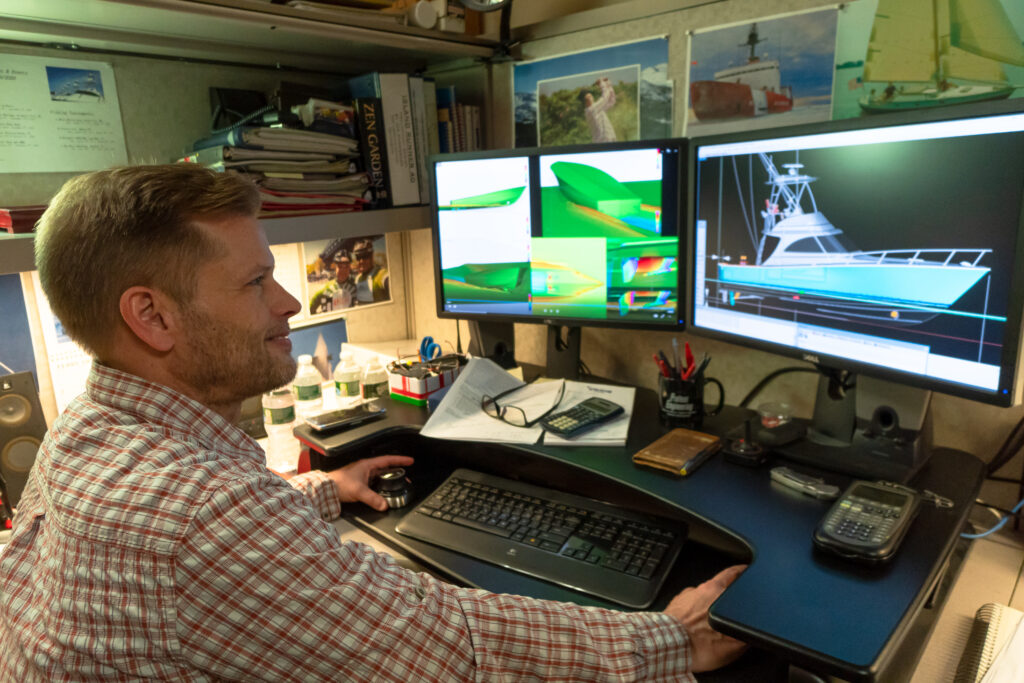
“You’ve got some people in the 60- to 68-foot range and others in the 73- to 83-foot range,” Bayliss said. “The first group is looking for speed and maneuverability, but they don’t necessarily have a large crew or crew that stays on the boat. So, that gives them a fast boat with good range and enough room for all the tackle they need whether fishing off the East Coast of the U.S. or in the Pacific. When you get into the larger boats, bigger crews and/or families are included. Everybody stays on the boat. They want to do extended trips to the FADs, or Mag Bay, or go up to New England. It’s a different purpose.”
Beyond Velocity: Diverse Owner Requirements for Ultimate Sportfishing Yachts
Beyond size, custom boats are just that, customized not cookie-cutter charter boats. “We build luxury yachts that go fishing,” said Peyton Lanier, an engineer at Jarrett Bay Boatworks, in Beaufort, North Carolina. “The owners want a lot. Maybe it’s freezers, extra provision storage and all the amenities to go along with it. It can be a balancing act between what’s too much for the size of the boat and what’s just right.”
Essential Innovations: Seakeepers, Sonar, and Starlink Enter Sportfishing Yacht Design and Technology
Over the last decade, the triple S’s – Seakeepers, Sonar, and Starlink – have moved from maybes, to must-haves in new builds. “The rise of the Seakeeper may be one of the biggest game-changers in boat technology in our lifetimes,” said Kenny Pontari, vice president of manufacturing for Contender Boats, in Homestead, Florida. “Integrating them into our builds has been one of the single biggest requests we receive.” A Seakeeper was a bucket list custom add on for Mufson on the Contender 44 CB. “On a really rough day, sometimes we’re the only boat that can get out and run home fast and everybody else has to turn around,” said Mufson. “Having a Seakeeper is pretty amazing. Also, we opted not to have a generator and instead, have a huge battery system with 1200-amp hours, and three 425 hp Yamaha XTOs instead of four, to save on weight and give us the extra speed.”
Advancements in Stability and Power: The Evolution of Seakeepers and Marine Propulsion
Though Seakeepers have been around for a while, they’ve improved over time. “Seakeeper is going to have field replaceable bearings this year, which is huge,” said Floyd. “It’s going to bring a lot of people to them that were a little hesitant because if it failed in the past, the bearing replacement was a big project. Now you can do it right in the boat.”
Installing a Seakeeper or Seakeepers does take a bit more planning on the build side due to space configuration. “We try to make sure all our boats have a 14- to 16-hour run day as a minimum at cruise speed, with a cushion,” said Bayliss. “Seakeepers can start biting into that fuel space, so the boat winds up getting a little bit bigger to support fuel, the Seakeeper, sonar, and the space those things take up.”
Few, if any, new custom sportfishers are built today without Sonar. “Even if the owner doesn’t want it right away on delivery, we’re not building a boat without the structure of the hull and sonar tube there,” said Lanier. “It’s more cost-effective than installing it later. And, the boat will have a better resale value as well.”
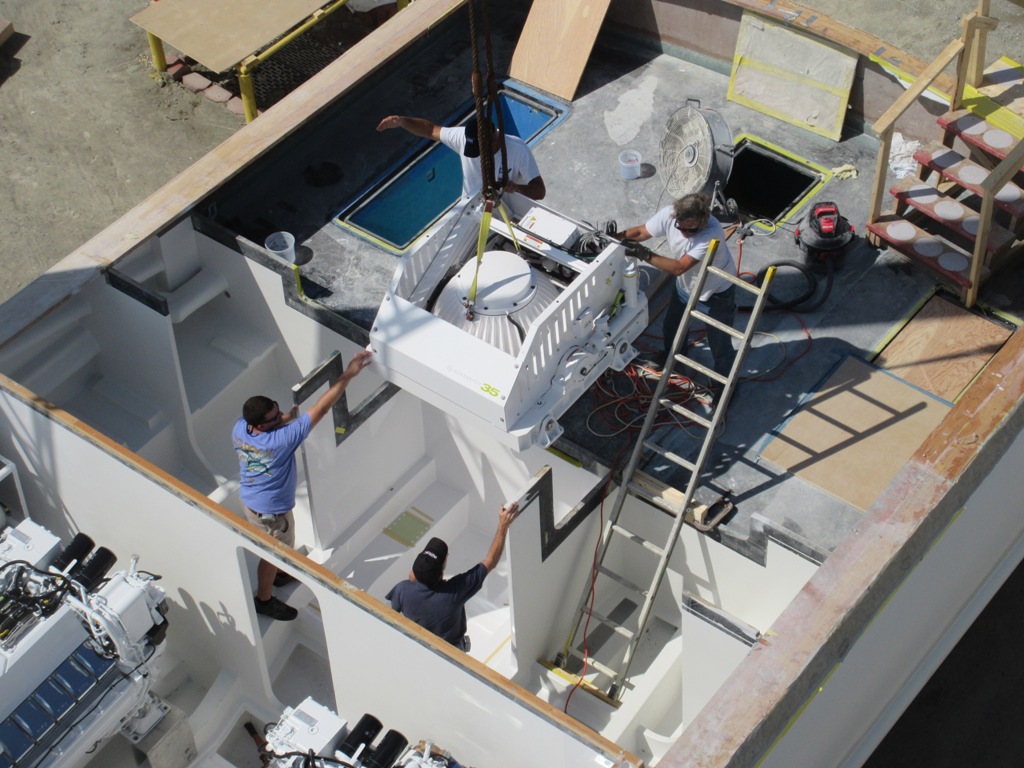
Uninterrupted Connectivity at Sea: The Rise of Starlink in Sportfishing Expeditions
Satellite communications, particularly Starlink, is something that the Viking Yacht Company has installed on its demo boats. Starlink allows owners to fish their boats extensively, whether it’s during breaks in fishing or traveling to and from the fishing grounds, and still stay in touch with the world. Plus, it doesn’t require extensive installation and Starlink is within a reasonable price point.
“These communication advances are very valuable because we’re seeing more owners branching out and going to places that they’ve only read about,” said Pat Healey, president and chief executive officer of the New Gretna, New Jersey-headquartered semi-custom builder. “Loading boats on ships and sending them around the world has become a normal occurrence. We sent our 80-foot demo to Cabo last year and had several months of excellent fishing, with the team releasing 1,750 striped marlin.”
One of the biggest game-changers for center console manufacturers is the ability to put a lot of the systems and luxuries of big boats into smaller platforms. “The addition of Seakeepers, sonars, electronics packages, appliances, livewells, etc. has upped the game for creating a luxury fishing machine that the whole family can enjoy,” said Contender’s Pontari. “New and improved options to power all these systems have allowed for this growth.”
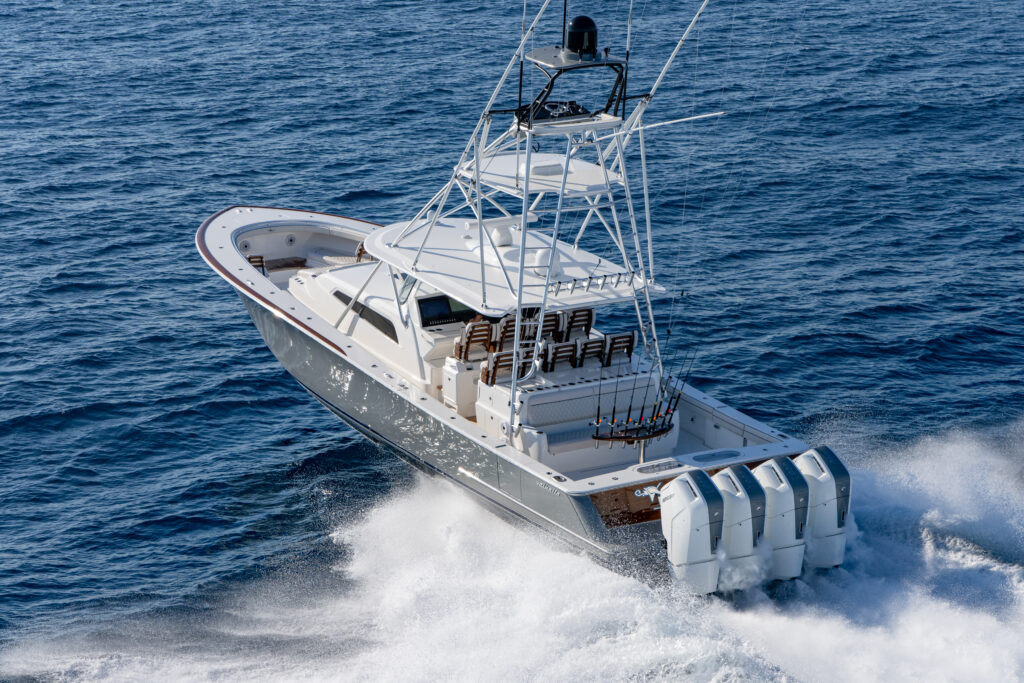
From Production to Design Excellence: The Transformation of Sportfishing Yacht Construction
Many builders over the last several years have transitioned from being production-led to becoming design-led, including Release Boatworks. “We were a production-led company, meaning that our primary focus was on producing boats as efficiently and effectively as possible,” said Jim Turner, founder of the Egg Harbor City, New Jersey-based company. “What we didn’t account for is that we are not a production boat. Our boats are custom in nearly every sense.” To this end, Release now has a dedicated team of designers, has increased its design and engineering departments, and invested in some of the latest design technology, to name a few.
This newer technology, like CNC (computer numerical control), 3-D printing, and CFD (computerized fluid dynamics) helps builders turn owner’s wish lists into reality, especially in making boats go faster. “Our newest build, which we splash in early August, is the 82-foot flybridge called the Snafu,” said F&S Boatworks’ Floyd. “It’s going to have a wide-open speed of around 44 to 45 knots. The reason we can do this is because we have access to technology like the CNC and 3-D printing. This helps us to make the boat a lot lighter, which helps us get it faster.
Harnessing Advanced Tech for Unmatched Speed: Insights into Cutting-Edge Boat Building
“CFD enables us to take our highly technical hull design,” he continued. “It’s called a longitudinal stepped variable deadrise hull, and put it into a simulated running environment. We can continue to refine the design of the hull and, for instance, the size of the steps, like how far through the chime we carry those steps. That has led to reduced friction on the hull. It makes a much softer and faster ride. These are things that we couldn’t do, or it would certainly take a lot longer if we didn’t have access to this technology.”
Builders like Winter Yachts are getting asked more often for V-drive inboard propulsion systems, and Wurst’s Iron Man will have V-drive. “We’re building boats that are approaching 50 knots and over and we’re trying to get weight aft,” said Winter. “A V-drive will allow us to do that. We also benefit from having a lower shaft angle which helps the boat maneuver and handle better at these speeds. The boat’s backing-down capability improves because the shafts are more parallel to the water line. In addition, you have less vibration, which translates to less noise, because you don’t have engines that are hard coupled to the boat. You have engines that are more or less floating, and you’ve got transmissions now that are absorbing all the torsional loadings and directional loadings from the drive line. The boat characteristics are pretty much better all the way around.” Iron Man will be powered by twin 2433 hp Caterpillar C32B engines.
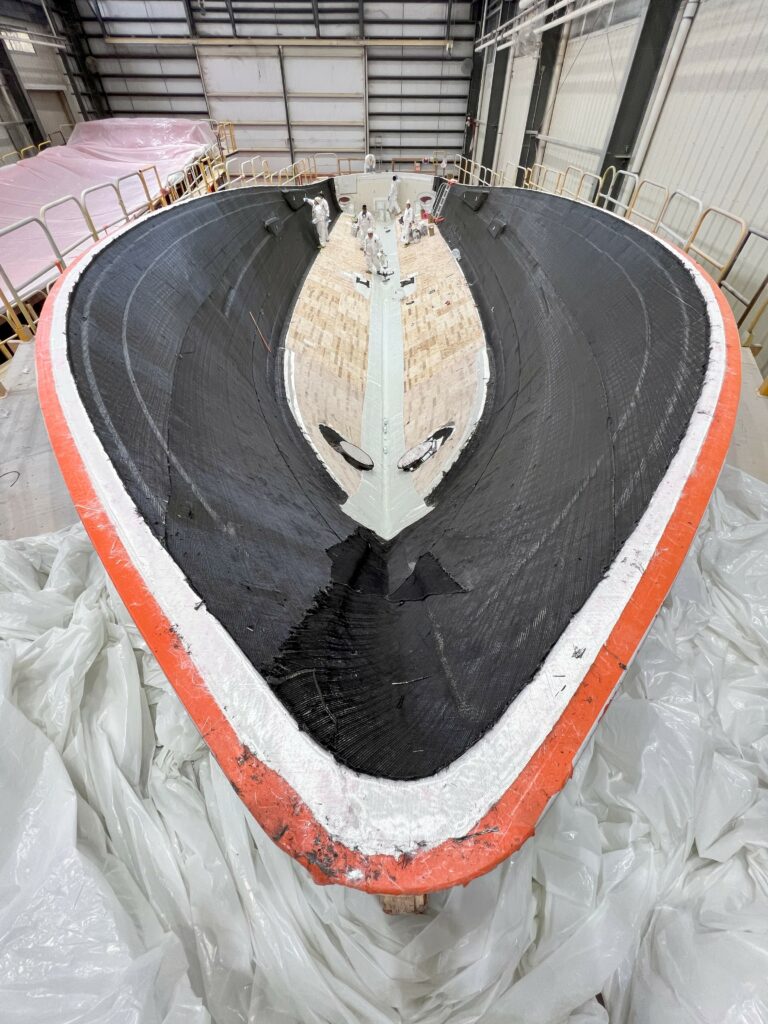
Optimizing Performance Through Computer Modeling: A Leap in Marine Design Efficiency
There have also been constant improvements in software programs like CAD (computer-aided design), also called 3D modeling. This lets designers create a model of a boat before the build starts. “Even better than showing an owner what they want, is showing them what they don’t want,” said Lanier. “That’s huge. For example, they might be talking about something, and we’re brainstorming, then as soon as we draw it up and it’s like, ‘No, that doesn’t look good.’ So, we don’t go down that route. Or maybe we see where we’re wasting space. Maybe it’s somewhere we could incorporate more storage or other amenities in the boat that might be beneficial in terms of comfort and convenience.”
Comfort and convenience have been a big focus in the last decade. “Now we see customers beginning to focus on maintenance,” said Turner. Items like ElectroSea, Arid Bilge Systems, and digital systems monitoring have been growing in popularity. ElectroSea especially has made a huge impact when it comes to maintenance, keeping the boat’s seawater system free of marine growth.”
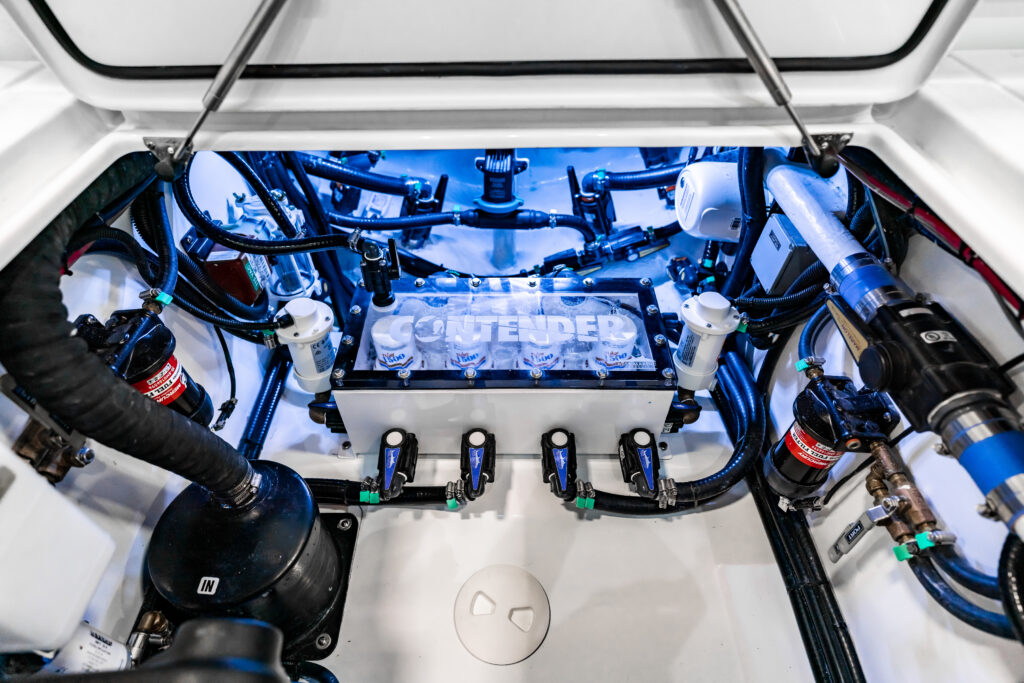
Charting the Future: Hybrid Power and Breaking Speed Barriers in Sportfishing Yachts
Hybrid electric power is one wave of the future for the next generation of sportfishers. “If you use your boat for a lot of hours, you need to consider the depreciation cost of your engines,” said Turner. “If you can troll for an entire day without putting hours on your motors, this becomes a significant savings when engines cost half a million dollars and up.” The industry isn’t quite there yet for a totally electric-powered sportfisher. “I think we may head that way and I’m sure one day there will be one built,” said Lanier. But, it’s going to be a few years.” Speed will continue to be at the forefront.
“I would like to see us break the 50-knot barrier,” said Bayliss. “Some people say their boat goes over 50 knots, but the reality is that’s almost impossible to achieve. We’ve hit a wall as an industry, and it would be nice to see us get past that in some way. I don’t know if it’s going to be through technology with foils or some other propulsion method, but I would love to see some breakthrough that was meaningful and made a difference.”
“I think there is a future for the sportfishing boats to develop a foil,” said Winter. Not a boat that would 100 percent foil, but a partial foil that would allow the boat to elevate, decreasing the drag, which would increase speed. It’s something that I would be willing to jump on board with. We get more horsepower that is lighter in a smaller envelope. Everyone wants to go faster. It’s another way to approach speed without just adding more horsepower.”
Don’t Forget to Check Out Our Sportfishing Job Board! Did You Know? It’s the perfect platform for seeking skilled captains and mates. Whether you’re on the hunt for your dream team or looking to join one, your next big adventure begins here. Explore the opportunities now! Click Here
Dive Deeper into the World of Sportfishing
Unlock Exclusive Savings: Enjoy 50% Off Your Subscription!
Are you ready to explore the thrilling world of sportfishing from the comfort of your home? Subscribe now and embark on a journey filled with captivating stories, expert insights, and insider tips. Choose between our digital or print edition and secure an incredible 50% discount on your subscription.
Subscribe today and get ready for an adventure like no other. Click here to subscribe and elevate your sportfishing experience with InTheBite Sportfishing Magazine.







